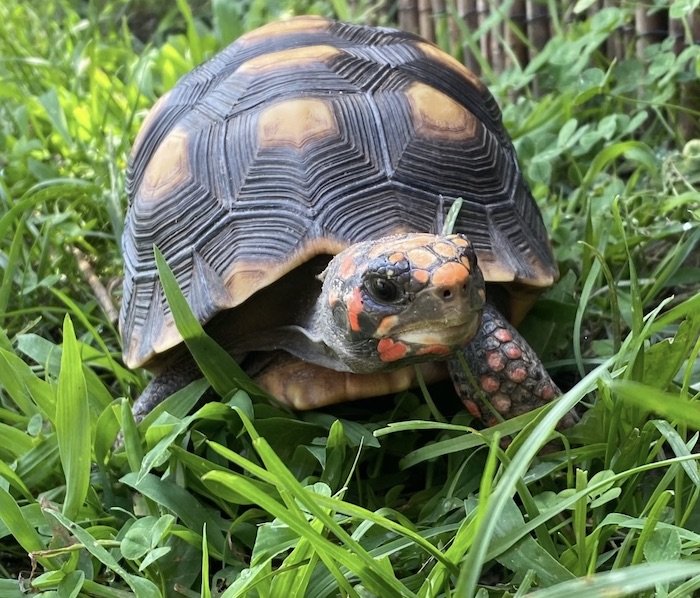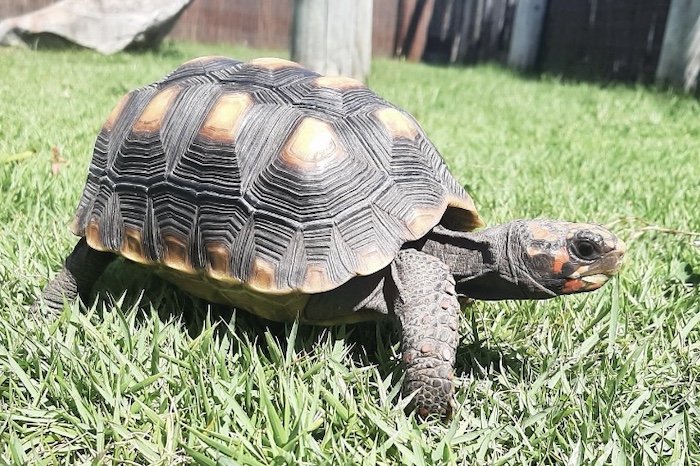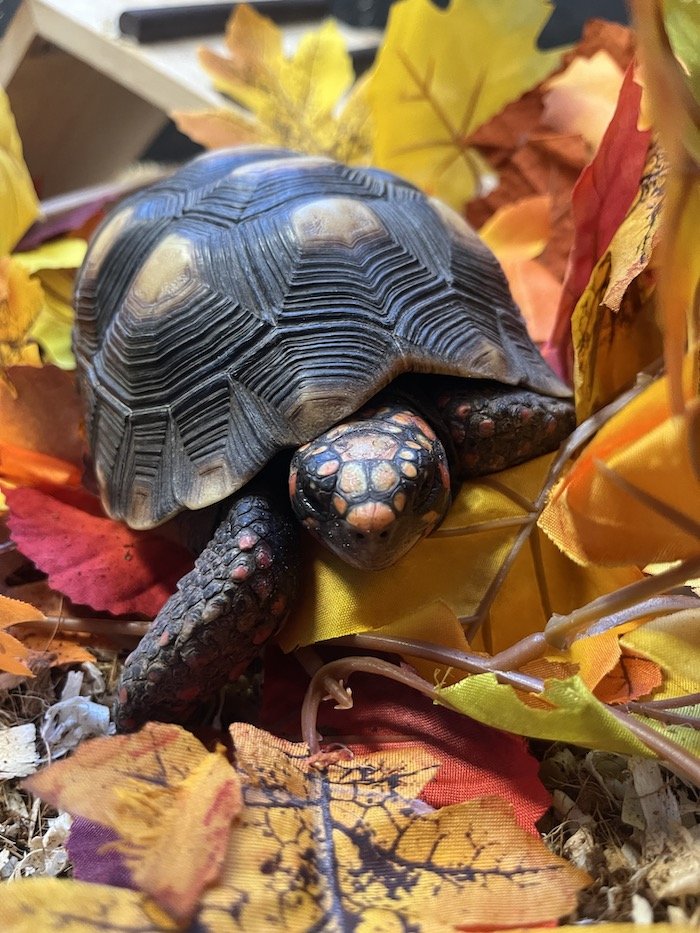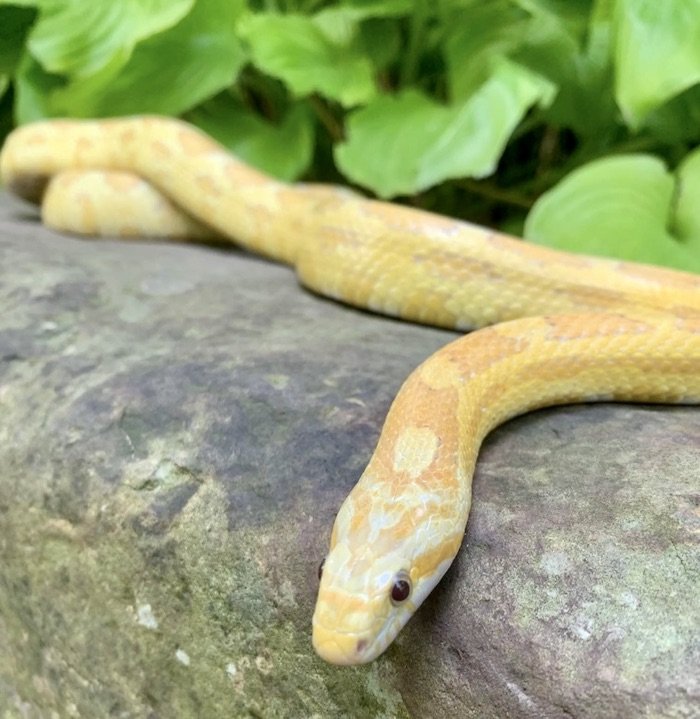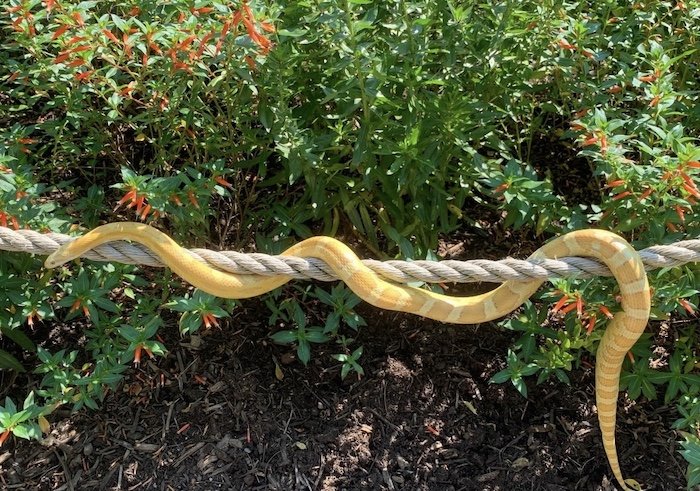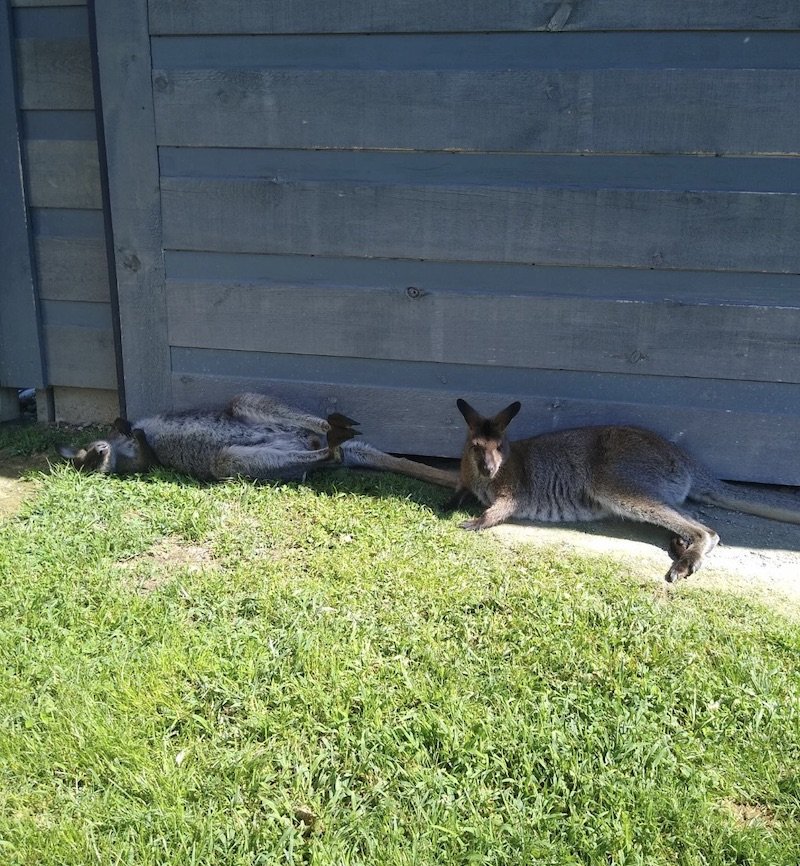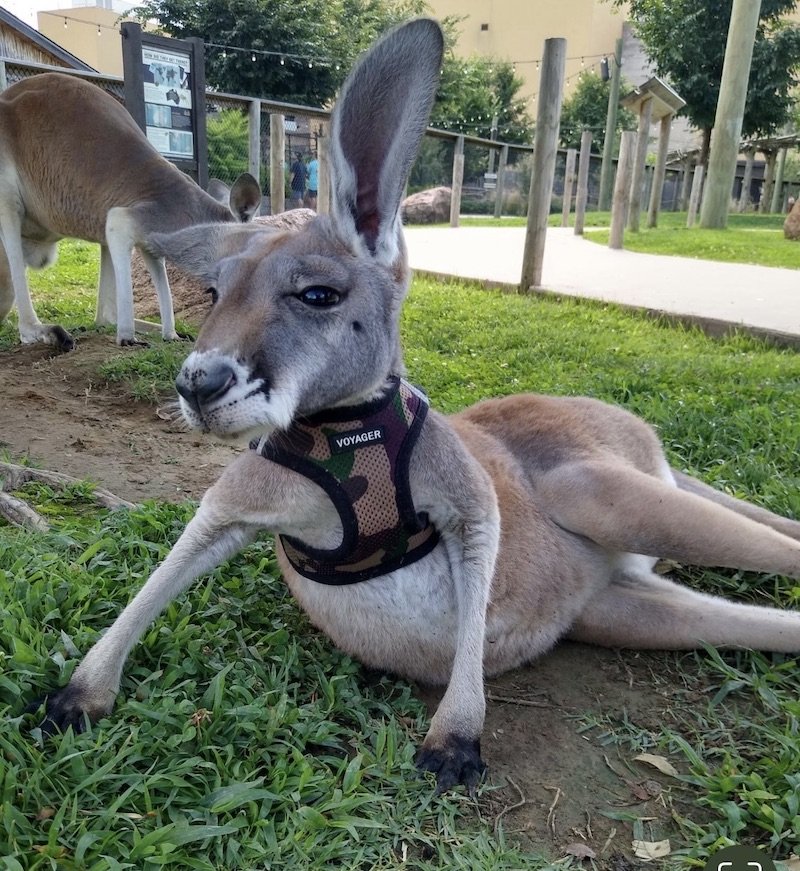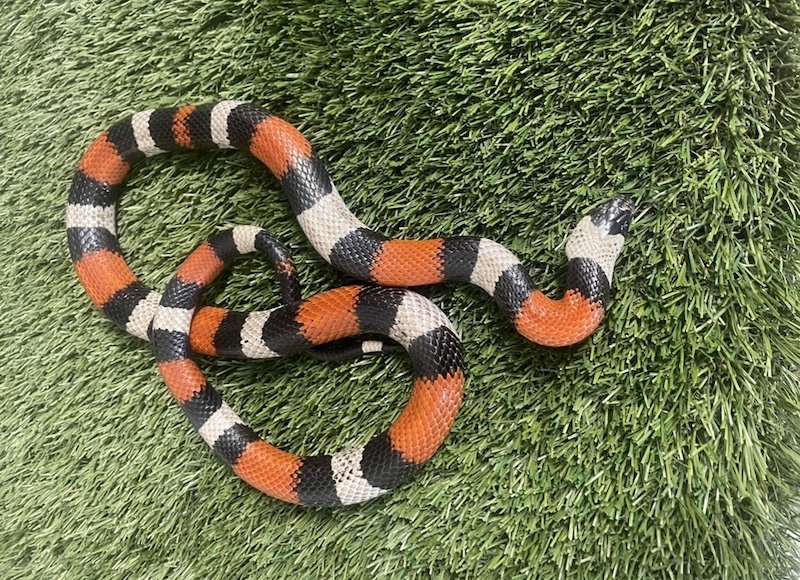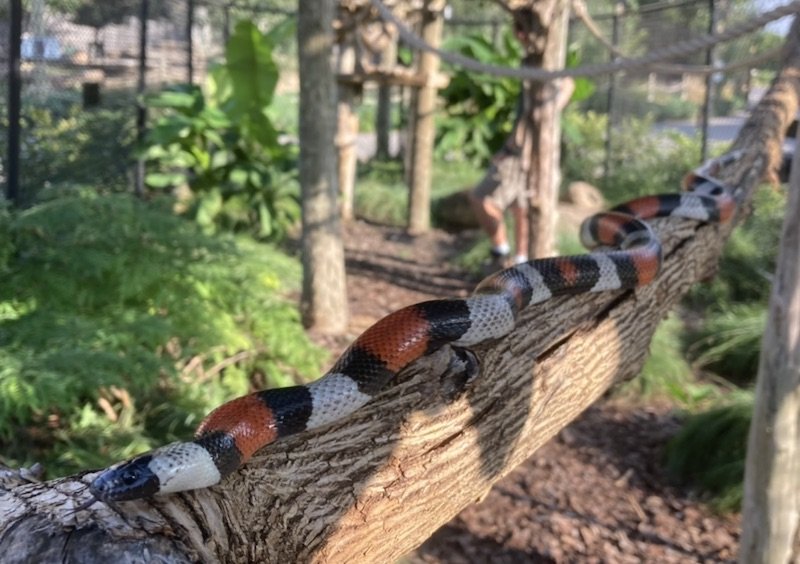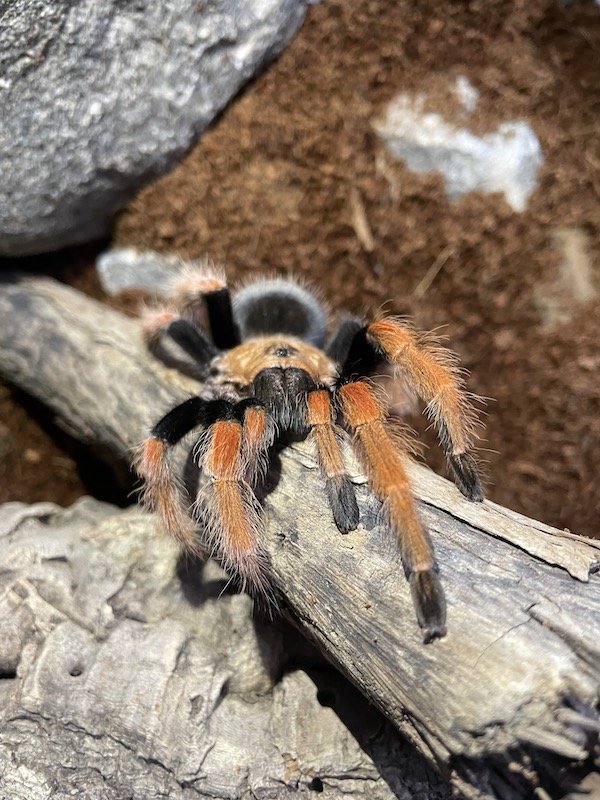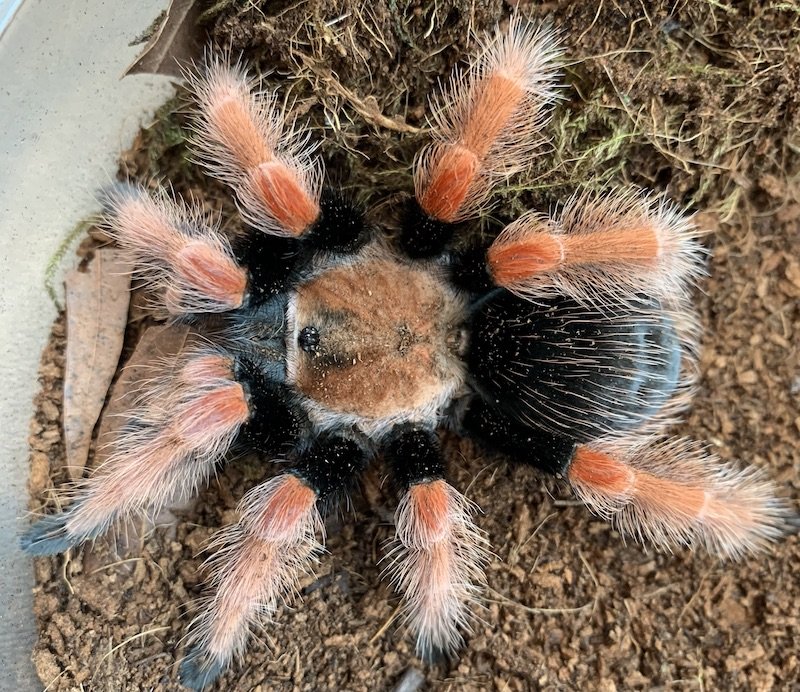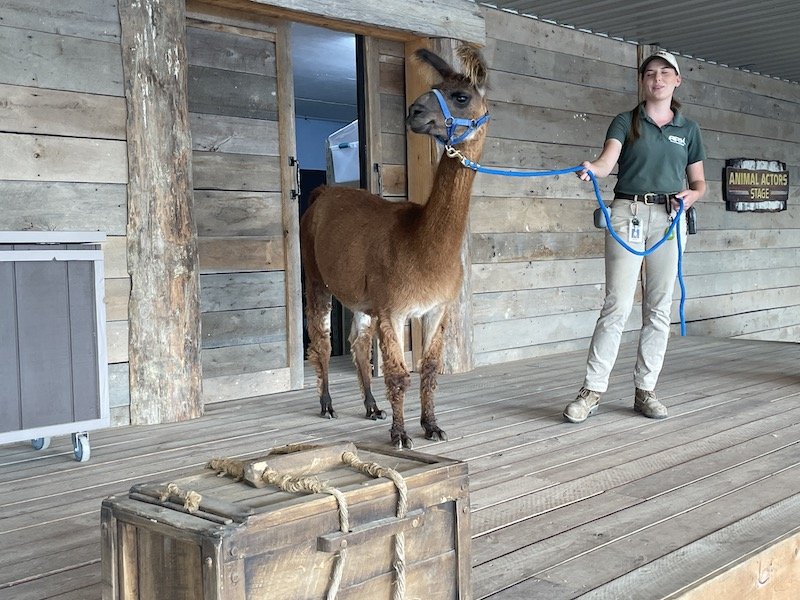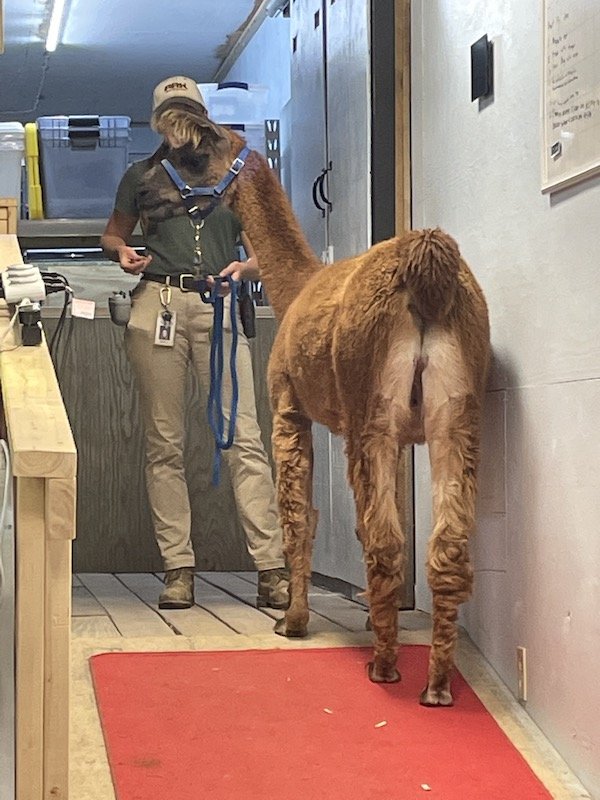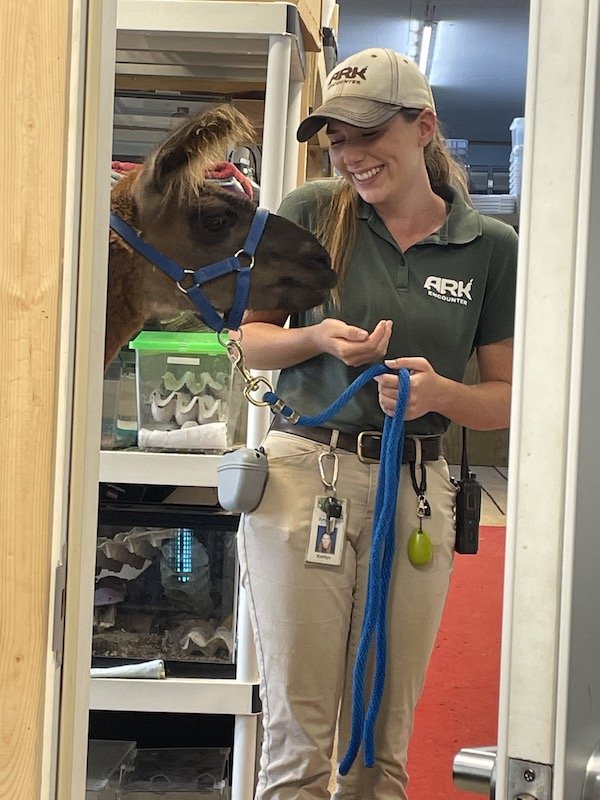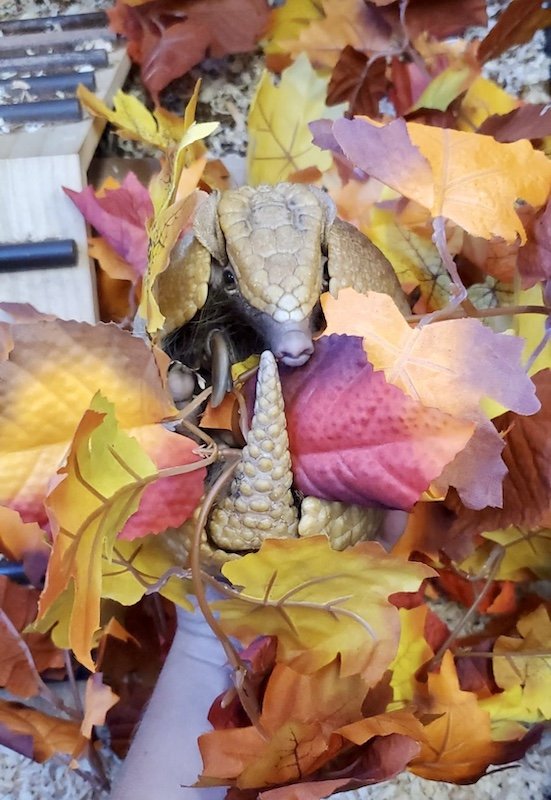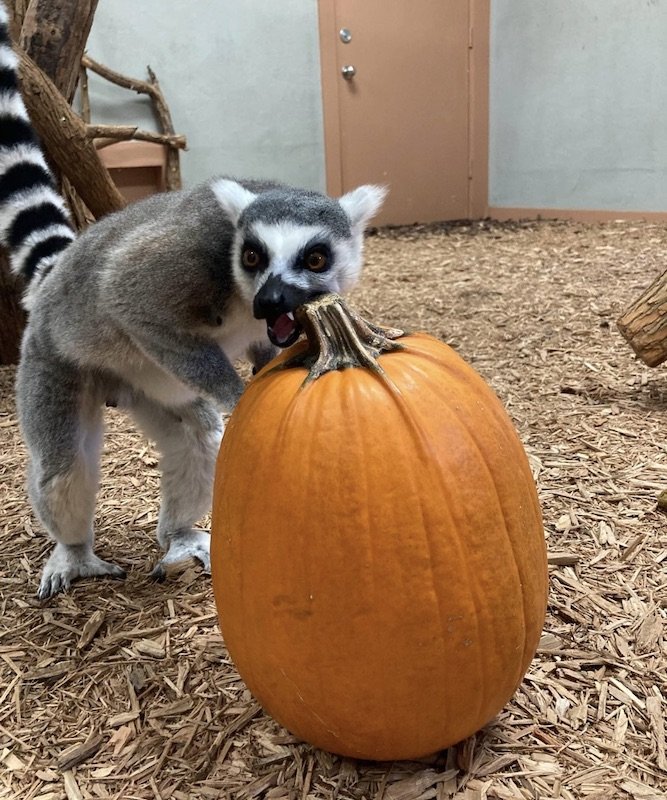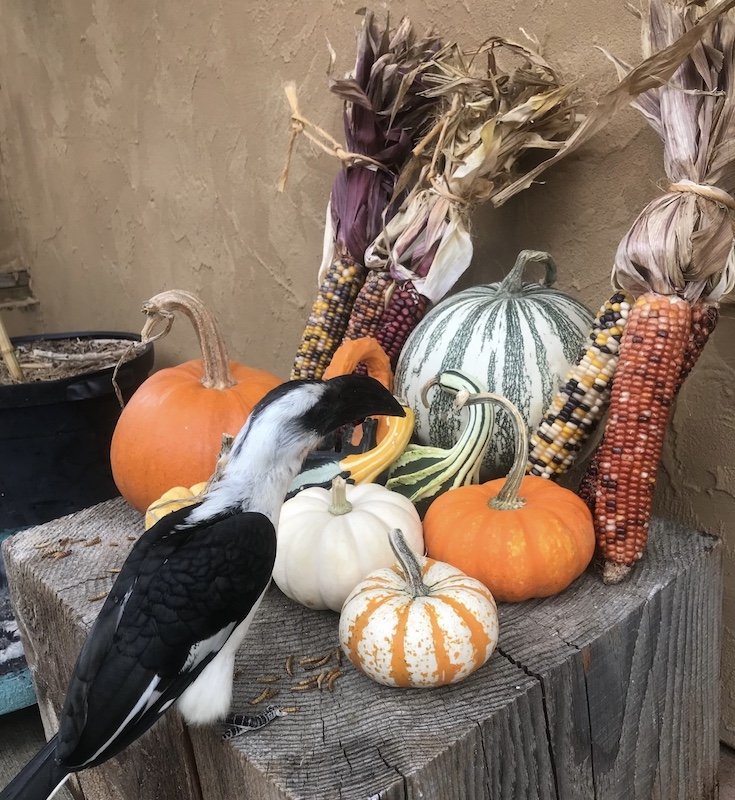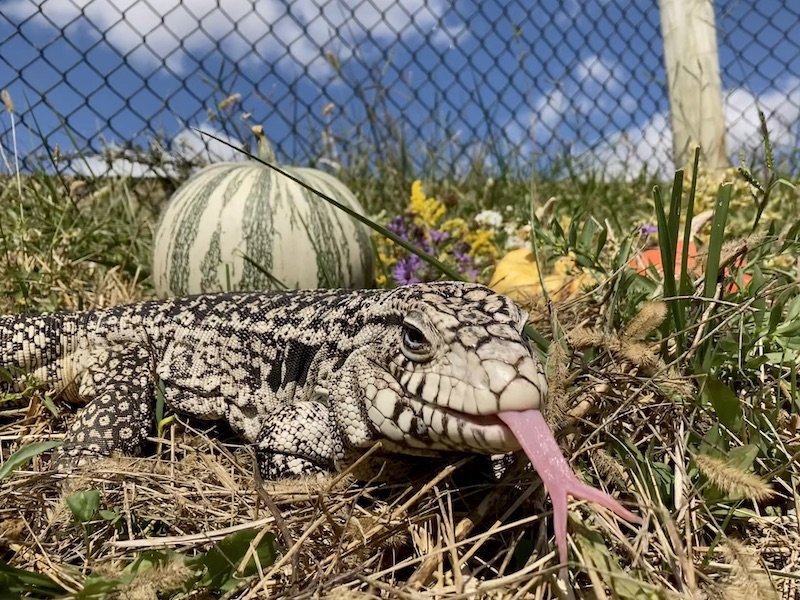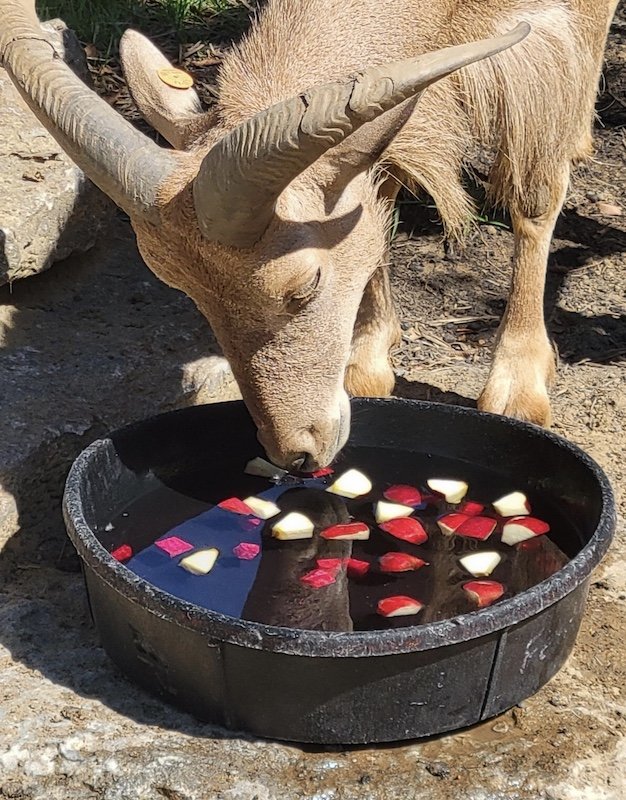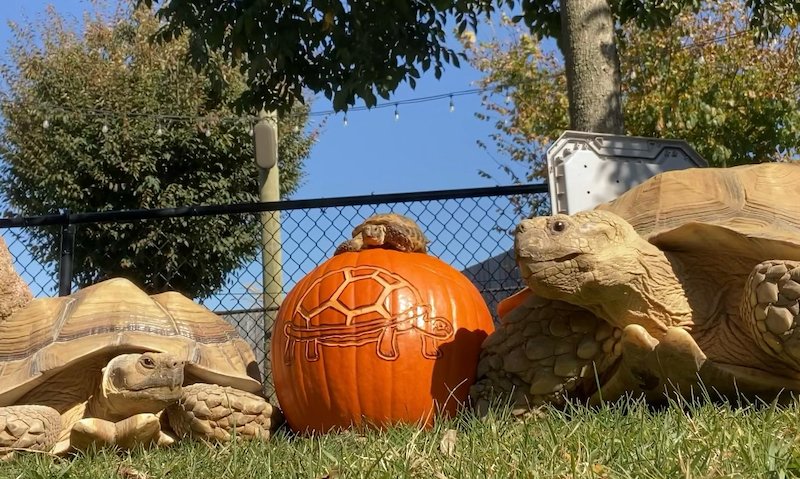Fall Festivities
Fall was a busy time for the zoos of Answers in Genesis! At the Creation Museum, we adopted two new reptiles for our animal programs: Cherry Torte the red-footed tortoise and Kinder the corn snake!
Red-footed tortoises are named for their beautiful red, orange, and yellow markings. Native to the forests and savannahs of Panama, South America, and some Caribbean islands, this species is unique among tortoises because they sometimes eat meat. In fact, they can gorge themselves so much that they don’t move for a month, and termites will start building mounds on them!
Corn snakes like Kinder are native to the southeastern United States and are named for the Indian corn-like patterning on their bellies. Kinder is a special morph (a differing color pattern within a species) called “gold dust.” Studies show these harmless snakes have intelligence similar to some birds!
Meanwhile, Boomer the Bennett’s wallaby moved to the Ark Encounter. He will live there as the Eden Zoo undergoes major renovations. We’re super excited for all the big changes coming, but Boomer doesn’t like being around construction noises, so he is temporarily living with the red kangaroos in the Ararat Ridge Zoo’s kangaroo walkabout. He’s also made friends with the Ark’s Bennett’s wallaby, Irwin! Our joey, Obadiah, has also grown up enough to join the mob full-time. He’s still got some maturing to do, but he gets along well with all the females and the wallabies. He loves to play, so zookeepers hang lots of toys in the habitat for him to box.
The Ark zoo also received some new animal ambassadors: Rahab the Pueblan milk snake and Deborah the Mexican fireleg tarantula!
Milk snakes get their name from a myth saying they drink milk from cows. While they can often be found in barns, it’s not to drink milk—it’s to eat all the rodents! Found in Mexico, Pueblan milk snakes are harmless, but they mimic deadly coral snakes so people and predators leave them alone.
Mexican fireleg tarantulas are an endangered species and can only be found in a small coastal region of Guerrero, Mexico. Although many people fear tarantulas, none of them can kill humans. Deborah is quite friendly and lets her keepers hold her.
We also have another animal that started doing shows—Shem the llama! A lot of training and patience went into getting Shem on stage performing. As he is a prey animal, getting him to go to a new place away from his herd can be a difficult task. However, our trainers have built strong relationships with him, so he trusts them. Working in baby steps, they got him comfortable with walking from his exhibit across the zoo, through the building, and onto the stage. He even gives his trainers kisses!
With fall weather comes fall festivities. Our zoo animals absolutely love apples, leaf piles, and pumpkins! Pumpkin is actually very healthy for many animals and is considered a “superfood.” It helps their digestion, boosts their immune systems, and provides important nutrients, vitamins, and minerals! Pumpkins also act as fun toys and hides for our smaller animals, or they can be carved and stuffed with goodies for larger animals. Check out some of our fun fall festivities below and join us next time for updates from the zoos!
- © 2025 Answers in Genesis
- Privacy Policy
- Contact
- About

